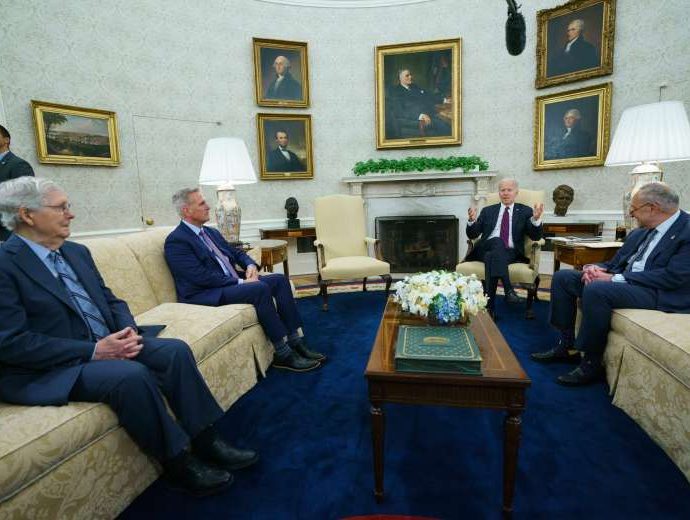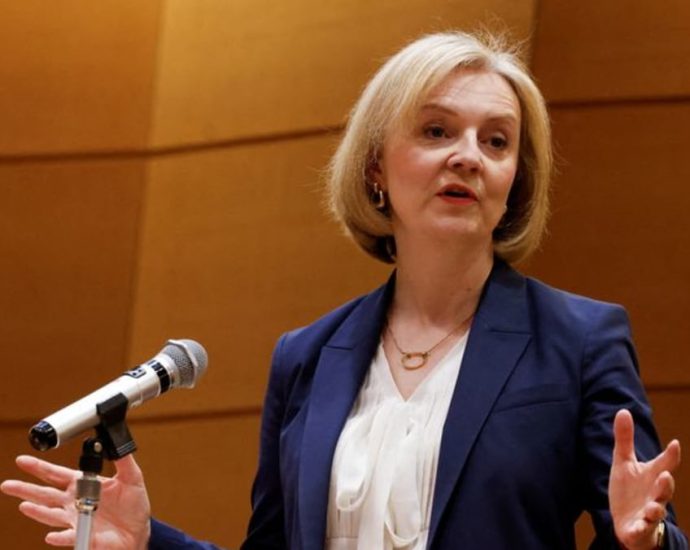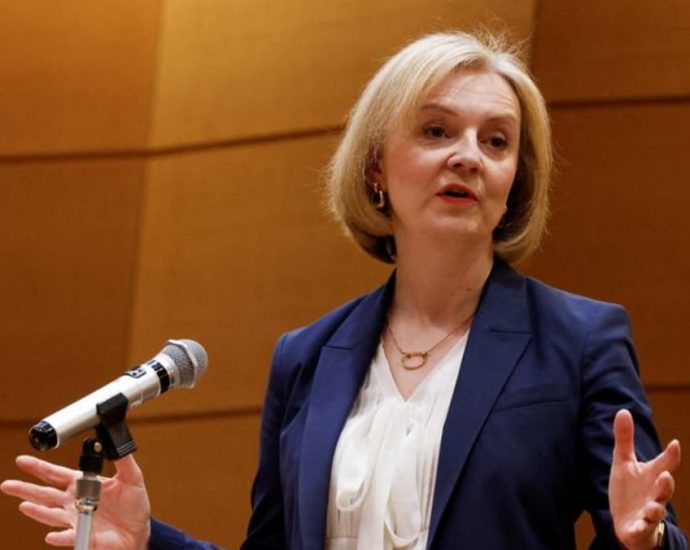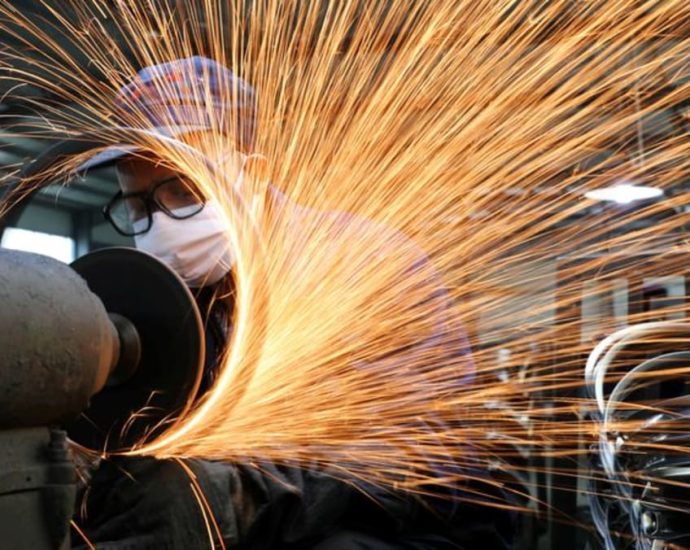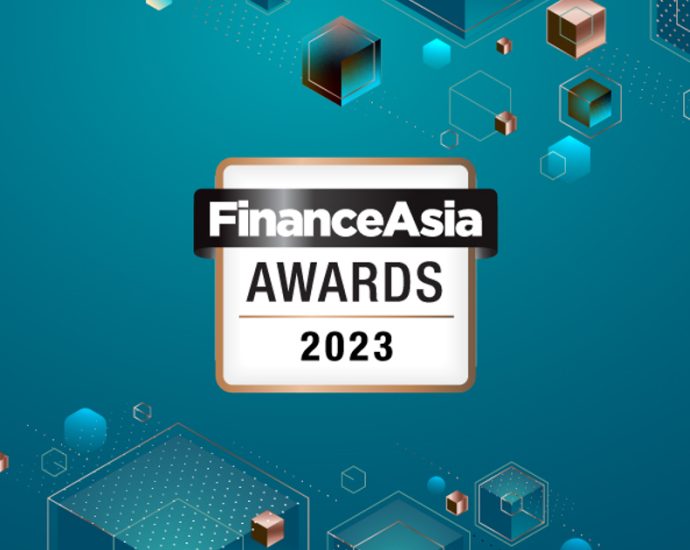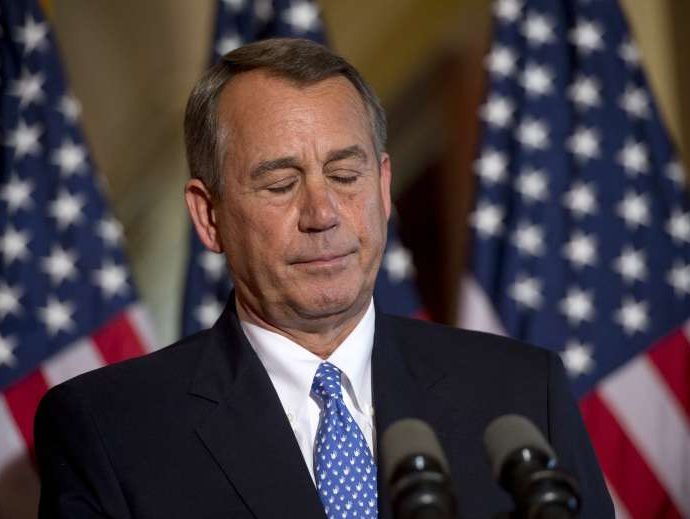US default, China decoupling hang heavy over Hiroshima
TOKYO — Japan’s decision to hold this weekend’s Group of Seven (G-7) summit in Hiroshima is appearing more and more “on the nose” with each passing day.
Worries that Russia might use nuclear weapons on Ukraine were part of Japanese Prime Minister Fumio Kishida’s calculus in choosing the city that was the first military target of such armaments in human history. Since that call, though, two economic nuclear options have emerged to fuel a bull market in Hiroshima symbolism.
One is the default drama that risks restoring the US to developing nation status. Republicans toying with financial Armageddon have US President Joe Biden truncating his Asia trip, scrapping stops in Australia and Papua New Guinea.
The other is how to play the China “decoupling” dynamic threatening to blow up world markets — and the Global South nations that host Kishida is inviting to the G-7. Along with Canada, France, Germany, Italy, the UK and the US, Japan has invited leaders from India, Brazil, South Korea, Vietnam, Australia and African Union and Pacific Islands nations.
Yet try as they may to send a clear message of unity versus China, G7 officials are likely to find that domestic disunity undermines any grand pronouncements, let alone bold joint actions.
Biden is sure to confront a torrent of questions about default risks. In just a matter of weeks, says US Treasury Secretary Janet Yellen, Washington will run out of cash. If so, all hell would break loose for every economy represented in Hiroshima – and those far beyond.
“If it does ultimately default on US Treasuries this would undermine the integrity of the world’s most popular ‘risk-free’ asset used in central bank reserves, low-risk private investments and as collateral,” says economist Will Denyer at Gavekal Research. “It would disrupt the global financial system and undermine the reserve status of dollar-denominated assets.”
Between Japan, China and other major Asian holders of US government debt, this region is sitting on somewhere near US$3.5 trillion of Treasuries. Yet Asia’s real exposure is its trade-reliant economies, which would be completely upended by the resulting surge in global bond yields, plunging share prices and gyrating exchange rates.
Even just the risk of the US missing a bond payment would do monumental damage. Joseph Abate, strategist at Barclays Plc, thinks US coffers might dip below $50 billion between June 5 and June 15. “Even this amount is too close for comfort a week or so ahead of mid-June tax date,” Abate says.
Adding to the dramas facing the G-7, this is a 100% self-inflicted threat to the global system manufactured in Washington by craven US lawmakers.

Sushil Wadhwani, chief investment officer at PGIM Wadhwani, notes that “in an increasingly polarized environment, politicians will need to see significant market turbulence in order to reach an agreement.”
As such, Wadhwani adds, “there’s a concern that the market is being complacent and that investors could be in for a sudden shock. Investors would not want to see unexpected fiscal tightening at a time when the risks of a US recession are already rising, and the possibility of a hard landing is increasing.”
All this plays right into China’s hands. To be sure, Chinese leader Xi Jinping won’t welcome how a US default derails his economy’s ability to meet this year’s 5% growth target. Nor would Beijing be happy suffering epic losses on the $865 million worth of US Treasury securities it owns.
Yet Kishida’s Japan would lose more on its $1.1 trillion of US government debt. And by playing Russian roulette with America’s credit rating again, the Republicans led by US House of Representative Speaker Kevin McCarthy would make Xi’s case for him that the global economy needs an alternative to the dollar.
“Again,” because the last time Republicans played games with raising the debt ceiling on Washington’s ability to borrow, in 2011, Standard & Poor’s yanked away its AAA credit rating.
As this reckless game plays out anew, Xi’s pro-yuan lobbying effort gets that much easier. If not the yuan, perhaps a “BRICS” currency, as Brazil, Russia, India, China, South Africa, and other anti-dollar-hegemony factions join forces.
One could argue decoupling efforts are a nuclear option all their own. The trade wars that former president Donald Trump launched against China from 2017 to 2021 disrupted US-China dynamics plenty. But Biden’s surgical focus on Chinese companies’ access to vital technology – and US prodding of allies to join in – accelerated the decoupling train.
This weekend’s stop in Hiroshima is an opportunity to gain broader clarity on what would constitute an economic divorce from China Inc and, more importantly, how to do it without wrecking Asia’s 2023 and beyond. Even the basic terminology is complicated, with some G-7 members and other leaders visiting Hiroshima favoring “de-risking” phraseology.
Biden’s White House has ambitious plans for the weekend. As the Wall Street Journal reports, “the US and its allies are poised to increase pressure on China” with “an expected joint statement rejecting use of economic retaliation against nations over policy disputes and other disagreements.”
The WSJ adds that “the anticipated statement isn’t expected to mention any country by name” but “comes as concerns mount among the US and its allies over Beijing’s increasing use of what its critics call ‘economic coercion’ to show its displeasure with other countries.”

A wrinkle that few saw coming is how Europe’s position toward China has in many ways become more adversarial than Biden’s. This might open an opportunity for the US to take something of a middle ground. Even so, leaders of the largest and mid-size industrialized economies will find severing commercial ties with China all but impossible.
Even just discerning where G-7 economies end and China begins will be a Herculean task. Chatter about reshoring industry, ring-fencing supply chains and tech self-sufficiency makes for great politics but precarious economics from Washington to Berlin to Tokyo.
Yet a recent report from S&P Global Ratings calls the process “unavoidable” despite the growing knowledge that it “will be costly” for the global economy.
“Global tech’s transition away from China will strain efficiencies and may consume much management focus over the next three to five years,” argues S&P credit analyst Hins Li. “Moreover, firms that move capacity out of China risk losing some access to that market, which many entities rely on for much of their growth.”
Nevertheless, Li points out, all available data show that the tech industry’s biggest global players are loosening their China ties. The catalysts range from China’s production disruptions amid Covid-19, geopolitical tension and a sharp escalation in curbs on tech exports. This generated a bull market in “concentration risk” in boardrooms around the globe.
In its report, S&P zeroes in on global laptop production. In 2021, China’s share of global laptop production topped 80%. By 2025, S&P thinks that share will fall by at least 10-20 percentage points. This will be a direct result of tech’s biggest names redistributing manufacturing capacity out of Xi’s economy.
For handsets, S&P estimates China’s share of production will drop by between 5 percentage points and 15 percentage points by 2025. The proportion of iPhones that Apple Inc makes in China will drop as rivals like India raise their manufacturing games. S&P notes that India’s iPhone industry will likely at least double by 2025. That compared to today’s mid-single digit percentage of total production.
“Spreading out operations won’t be as efficient as utilizing giant factories in China, which maximize economies of scale and draw on existing robust supplier networks, infrastructure, and talent pools,” S&P writes. “Some companies may retain redundant capacity in China in case they encounter production hiccups while ramping up new sites.”
Even so, this weekend’s G-7 talks are just as likely to get bogged down in petty infighting and a torrent of sideline topics that leaders will bring to Hiroshima. In addition to Biden’s debt default nightmare, French President Emmanuel Macron faces public outrage back home over steps to raise the national retirement age from 62 to 64 later this year.
Macron’s team, meantime, is feuding with Italian Prime Minister Giorgia Meloni, which it has called a “far-right government” with a policy mix “incapable of fixing Italy’s migration problems.”

The G-7 confab also comes as Ukraine seeks additional aid, both financial and military, and Russia continues to dig in for the long haul. Along with worries about Vladimir Putin’s threats to use tactical nukes in the conflict, G-7 leaders are sure to be questioned about how Moscow’s economy is skating around global sanctions quarter after quarter. Support for Taiwan will come up early and often, too.
Also likely to come up in G-7 discussions and press conferences: Turkish President Recep Tayyip Erdogan’s political survival instincts ahead of a May 28 runoff election. This drama in Turkey, a NATO member, will matter greatly for the course of everything from Russia-Ukraine dynamics to the state of play in the Middle East.
Still, the 800-pound gorilla in the room during any of these discussions will be the default insanity following Team Biden at every turn. Defusing that existential threat to global stability 7,000 miles away in Washington will be easier said than done.
Follow William Pesek on Twitter at @WilliamPesek


